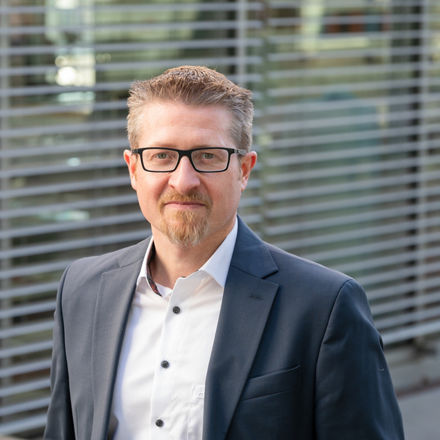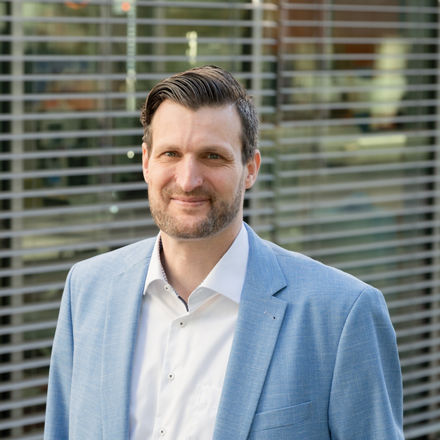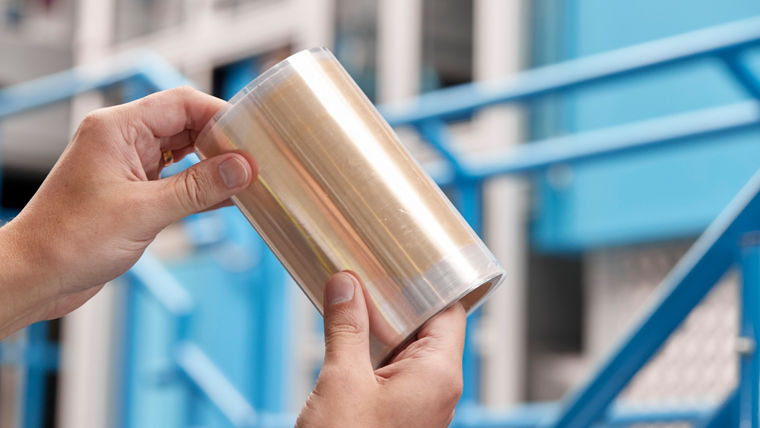Here is the translation of the text into US English:
Hydrogen is an important building block of the energy transition. On one hand, it serves as a CO2-free energy carrier for industrial production and mobility; on the other hand, hydrogen is a crucial raw material for the chemical industry. The global demand is 100 million tons and continues to rise. The market is dominated by gray hydrogen, which is produced from fossil sources like natural gas, resulting in the emission of carbon dioxide.
Estimates suggest that hydrogen demand will rise to between 300 and 700 million tons by 2050, depending on the scenario. Consulting agencies predict that 60 to 70 percent of this will be green hydrogen, with the remainder being blue hydrogen. Green hydrogen is produced through electrolysis from water using electricity from CO2-neutral—preferably renewable—sources. Blue hydrogen continues to be produced from fossil sources, but the CO2 is captured to prevent it from entering the atmosphere.
ELEMENTS-Newsletter
Receive exciting insights into Evonik's research and its societal relevance—conveniently via email.
With 60 percent, China currently has the largest demand for hydrogen. As the country has massively expanded renewable energies over the past 15 years, the production of green hydrogen in China is already significantly cheaper than in Europe. Gray hydrogen from natural gas is comparatively expensive there, as Asian countries like China, South Korea, and Japan have limited or no access to natural gas pipelines. Domestic natural gas production cannot meet the demand. Thus, in China, a kilogram of hydrogen from natural gas currently costs about $2.8, while from electrolysis it costs $4.5. In Europe, a price of €1.5 for conventionally produced hydrogen contrasts with €6 to €9 for green hydrogen. Americans are focusing on blue hydrogen due to the good availability of natural gas.


»Duraion has the potential to make the production of green hydrogen more cost-effective.«
Christian Däschlein Head of the Growth Area Hydrogen Economy at Creavis
Lower Investment Costs
For the economic viability of green hydrogen, not only is affordable green electricity crucial, but also the investment costs for the electrolyzer. With a self-developed innovative and high-performance anion exchange membrane (AEM), Evonik could make a significant difference in the future. The Business Line High Performance Polymers (HP) markets the membrane under the name Duraion. "Our membrane is a central component in AEM water electrolysis," says Christian Schnitzer, responsible for Duraion at HP. Christian Däschlein, Head of the Growth Area Hydrogen Economy at Creavis, adds: "Duraion has the potential to make the production of green hydrogen more cost-effective."

Electrolysis with anion-conducting membranes has clear advantages over other electrolytic processes, such as the classic water electrolysis with diaphragm (alkaline electrolysis, AEL) or the newer PEM electrolysis (Proton Exchange Membrane), which operates in an acidic environment. The AEM electrolysis promises lower investment costs compared to PEM electrolysis, as operating under alkaline conditions allows the use of non-precious metals, which are significantly cheaper. Compared to AEL, it is characterized by high current density, very good efficiency, and high flexibility in power input, similar to PEM electrolysis. "AEM electrolysis combines the best of both worlds," says Däschlein.
Up to approximately 3.3 feet wide
The development of a membrane for AEM electrolysis also brought challenges. The alkaline environment is aggressive, requiring a resilient and high-performance membrane to operate under these conditions, which demanded extensive expertise and research work.
For instance, the combination of the polymer building blocks, from which the membrane is made, its production, and the membrane's manufacturing process challenged the experts.


»Customer interest is huge. Now we just need to deliver.
«
Christian Schnitzer Product Line Membranes at High Performance Polymers
"The combination of a multitude of expertise has brought us to our goal," says Däschlein. He particularly emphasizes the role of process engineering, as well as engineering and technical service, and the cross-functional collaboration with the research units of High Performance Polymers, Interface & Performance, Crosslinkers, and Catalysts, which made the successful product development possible. More than 60 participants contributed their specialized knowledge and technical capacity. "Innovations like the AEM membrane can only succeed together. This way, we utilize existing resources optimally, minimize the required investment funds, and maximize output," says Däschlein.
Evonik is now investing a low double-digit million-euro amount in the construction of a pilot plant for the production of the new membrane in Marl. It is expected to be operational by early 2026. Evonik has already steadily increased the production capacity of intermediates for Duraion membranes. Once completed, the plant will be able to produce enough membranes annually to provide 2.5 gigawatts of electrolysis capacity for hydrogen production.
In the future, the membranes will be up to one meter 8about 3.3 feet) wide instead of 13 centimeters (5.1'') as in the laboratory facility, meeting customer requirements for commercial AEM electrolyzers. Additionally, the production facility will also be able to manufacture fabric-reinforced membranes to meet growing customer interest in mechanically even more stable membranes.

Opportunities, especially in China
Parallel to the technical development of the membrane, the team led by Däschlein and Schnitzer gathered feedback from customers and the market, thereby refining the requirements for the membrane.
Schnitzer sees significant marketing opportunities in Asia, especially in China, where the hydrogen economy is being massively expanded. There are many startups, and corporations are also investing in the hydrogen sector. "The country wants to make the technology base-load capable, enabling the continuous provision of energy with the help of hydrogen," says Schnitzer. China aims to use hydrogen not only as an energy carrier but also to produce energy-rich substances like methanol and ammonia from it. These substances have a smaller volume than hydrogen and can therefore be transported more easily.
Parallel to the technical development of the membrane, the team led by Däschlein and Schnitzer gathered feedback from customers and the market, thereby refining the requirements for the membrane.
"We observe that in China, alongside the classic AEL, there is also increasing demand for AEM technology," says Schnitzer. Experts assume that the classic and cost-effective AEL will produce around 70 percent of hydrogen in the future. The flexible AEM technology would then be a good complement to this base-load security.
To this end, Evonik will provide the market with a high-performance membrane with Duraion starting in 2026. "Customer interest is huge," says Schnitzer. "Now we just need to deliver." For the European market, Evonik experts see significant potential for improvement. Not only are electricity costs far too high, but there is also a lack of an ambitious concept for a holistic transition of the gas economy. Schnitzer demands: "We need a major breakthrough to make hydrogen base-load capable in Europe as well. Other regions are faster and further ahead."

Overview of Electrolysis Processes
Water electrolyzers always follow a comparable principle in their construction: they consist of electrodes (anode and cathode), an electrolyte, and a separator or membrane. The separator keeps the resulting products hydrogen and oxygen separate in alkaline electrolysis and allows the migration of ions to achieve charge balance. This separation layer is the central component of the electrolyzer, as it significantly influences efficiency and reliability.
The Classic AEL
The workhorse among the previously common processes is alkaline electrolysis (AEL). Here, the electrodes are placed in a highly concentrated potassium hydroxide solution. At the cathode, water molecules split into hydrogen and hydroxide ions. The hydrogen rises as gas, and the hydroxide ions migrate through the solution to the anode, where they react to form water and oxygen. To prevent the reaction products from recombining with a big bang, a porous diaphragm as a separator separates the anode side from the cathode side of the electrolyzer. This robust technology uses relatively inexpensive materials. For example, nickel, cobalt, or iron are used in the catalysts that initiate the reactions at the electrodes, and stainless steel is used in the housing components. Accordingly, large electrolyzers are built today based on this proven concept.
A disadvantage of AEL: Since the diaphragm is porous, meaning it allows gases to pass through, the systems can only be operated under pressure to a limited extent. Therefore, the hydrogen must be compressed with high energy expenditure to be stored and transported further. The porous membrane can also only be operated at low current densities, resulting in lower efficiency.
More Efficient with PEM
The PEM electrolysis (Proton Exchange Membrane) achieves significantly higher current densities. Therefore, a much smaller electrolyzer is sufficient for the same amount of hydrogen. Such electrolyzers are already on the market. In PEM electrolysis, a membrane is used instead of a diaphragm. A PEM electrolyzer is not only operated at higher current densities than an AEL system, but it also withstands larger load fluctuations. Since it can also be operated under pressure, less energy is required for subsequent hydrogen compression.
PEM cells operate in an acidic environment, requiring very robust materials. Precious metals like platinum and iridium are needed for the catalysts, and titanium or even platinum-coated titanium for the cells. This noticeably increases investment costs. Iridium, in particular, is a scarce resource.
Cost-Effective Future with AEM
The construction of an AEM cell (see graphic on the left side) is quite similar to that of a PEM cell; it can also be operated under pressure and with high electrical power. The heart of the AEM is also a membrane made of an ion-conducting polymer. For the electrodes, significantly cheaper non-precious metal materials like nickel can be used, as the process operates in an alkaline environment.



